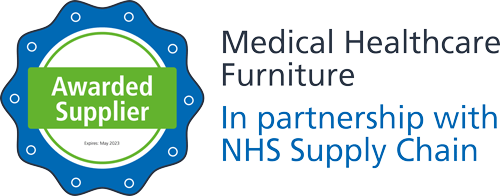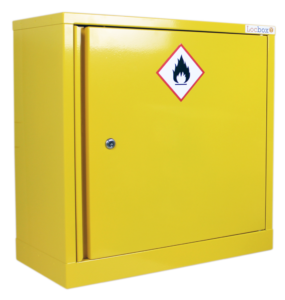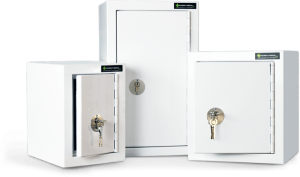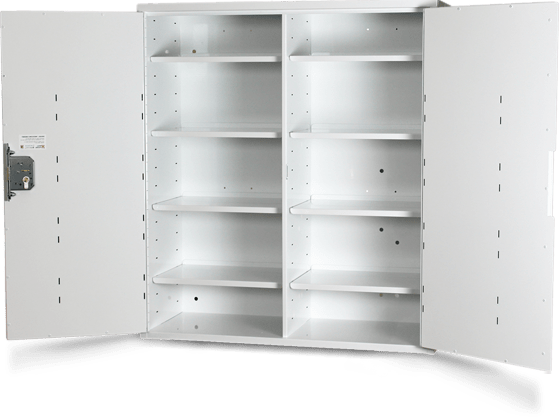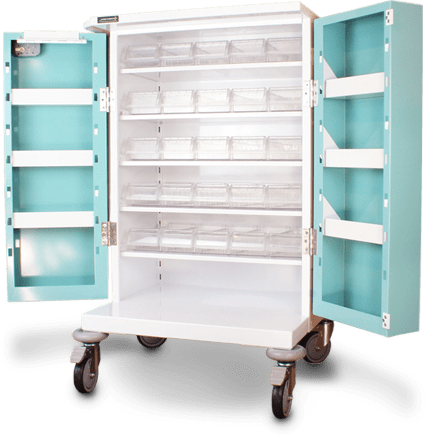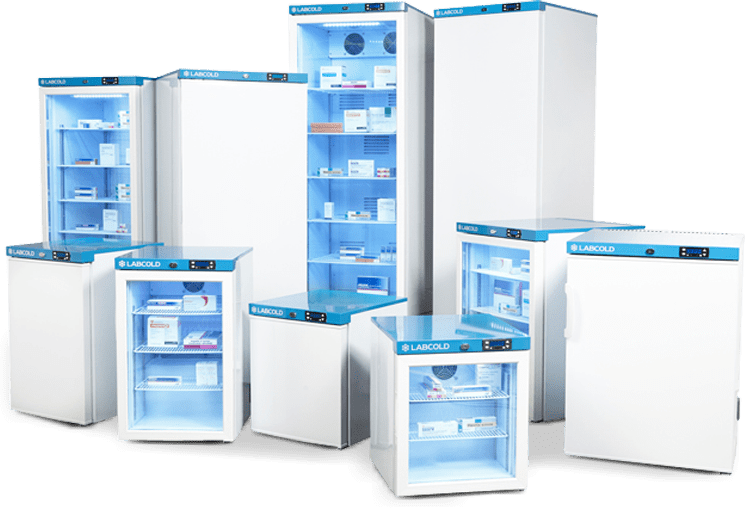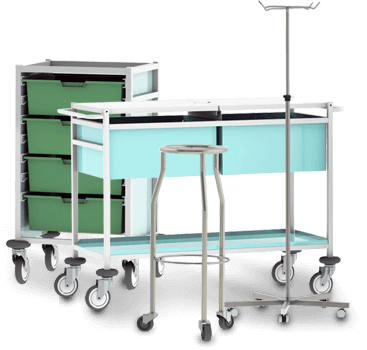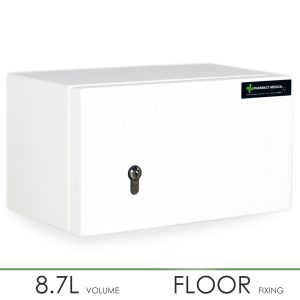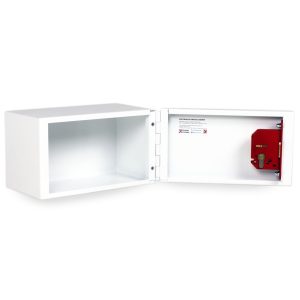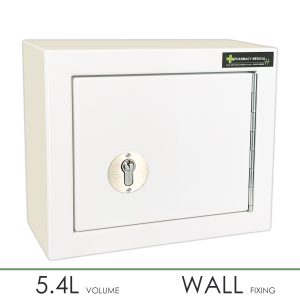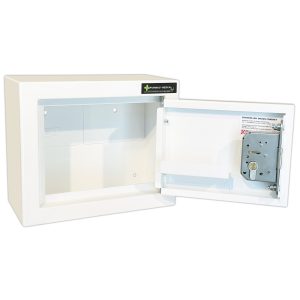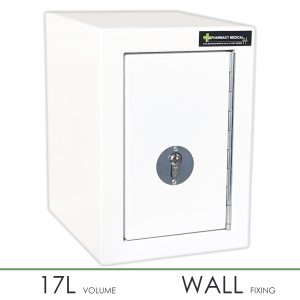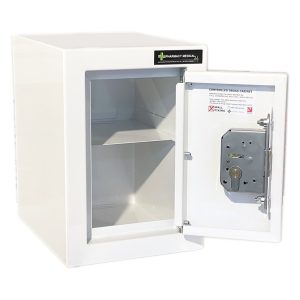Pharmacy Medical Drugs Cabinets
The Process of Manufacturing Controlled Drug Cabinets
Here at Pharmacy Medical we do everything we can to show you how we do things. That includes how we manufacture the items we offer. Unlike some others, we actually manufacture all of our CD, medicine cabinets, drugs trolleys and the majority of our hospital furniture ourselves. The following video shows you an overview of the processes involved.
The Manufacturing Process
We will have, without doubt, gone over this process many times in pages and blogs elsewhere on our website. That said, it seemed fitting to add a little description to support our brief video above.
Firstly, so that there is no confusion, we are not actually manufacturing a controlled drugs cabinet in the video above. We are making a selection of products, from our POD Lockers through to powder coating shelves for our CD cabinets. Never the less, the process and machinery is the same. All that differs really is the material thickness.
So, step 1:
- Blank sheet steel is loaded into our laser cutter. This laser uses pre-determined profiles from a CAD file to cut out the shapes needed to form the cabinet. We cut with nitrogen gas, rather than just oxygen as it forms a better edge on the profile. Our welders prefer this. When making a CD cabinet, we use 2.0mm thick cold reduced mild steel for all of the body and door, and 1.2mm thick for the shelving. Laser cutting the profiles can take from as little as a couple of minutes for our smaller cabinets to half an hour for our more complicated and larger designs.
Step 2:
- Press forming. Using our CDC press brakes, we use tooling and pressure to bend the profiles that were cut in step one into the required shape. The operation of the machine is done by hand, although the bends and depths are controlled by the computer on the machine. This ensures accuracy and repeat-ability.
Step 3:
- Welding. Once the cabinet has been formed into shape, it becomes the job of the welders to weld it all together. For a Controlled Drugs Cabinet that required fully welding all the joins. We use TIG welding for this. The cabinet is then sanded smooth and sent over to our paint shop.
Step 4:
- Powder Coating. Once the cabinet is fully welded together, it is time for it to be painted. We use an electro-static process called powder coating. This processes involves dry powder being sprayed at the raw metal. The powder is statically charged and clings to the raw metal. It is then carried on our conveyor into an oven where it usually spends approximately 10-15 minutes at around 190 degrees c. Once the cabinet is out of the oven and has cooled down, it is removed from the paint line and taken to be assembled and shipped out.
Step 5:
- Assembly, packing and shipping. We didn’t show you this on the video, however once painted the cabinets need the locks fitting to the doors, the doors to the cabinets and then packing ready to be dispatched. All of our cabinet are assembled by the same person. This both keeps them busy, but most importantly ensures that we know everything that should go out with every cabinet, goes out with the correct cabinet.
- Once the cabinet has been packed, it is shipped out via courier. At the time of writing we are using DPD Local for our smaller cabinets, DX Logistics for our medium sized units and a pallet network for all larger units.
You can read more about manufacturing controlled drug cabinets by following this link. The link will take you to our manufacturing website.


